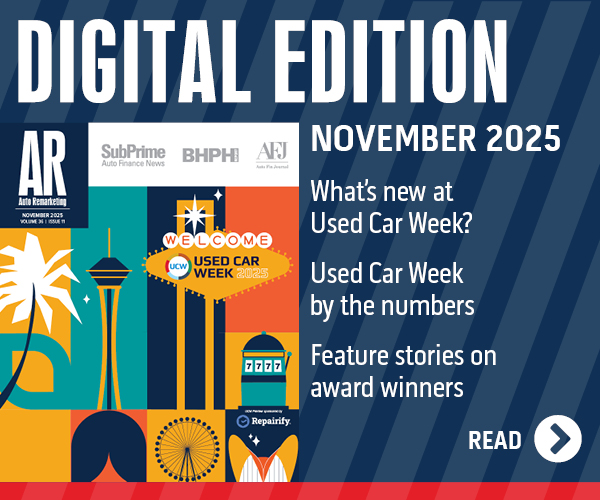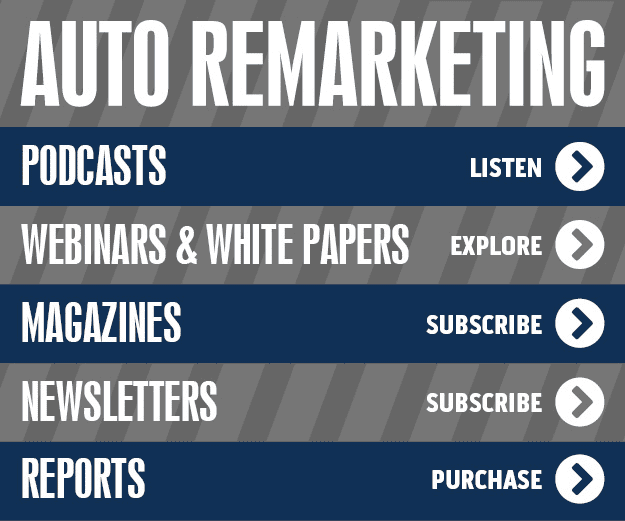Maybe the Beatles were on to something back in 1965 when they released this single. If you look around the market these days; marketers have their heads down trying to figure out how to transform their business models to include some sort of subscription type offer and bring it to market.
It’s really very interesting to experience such a dramatic shift in the focus of the marketing community regarding the best way to bring new products to market. Just a year ago much of the marketing speak in our industry was focused on leveraging ecommerce and the remnants of brick and mortar retailing.
With the monopoly-like dominance that Amazon has developed in recent months thru organic growth and strategic acquisitions; it appears that many merchants have literally thrown in the towel believing that there is no way to compete with this juggernaut. At best, most believe that they are really competing for a much smaller piece of the overall consumer market that is reserved for the No. 2 position in their respective market segments.
Product marketers are feeling the impact of this brick and mortar retail channel consolidation and centralization as they vie for the love of Amazon, Walmart and other big players who are grabbing huge swaths of consumer purchasing. The Big guys are using their distribution “prowess” to crush margins and profits resulting in a product marketing arena that is desperate to find new ways to work “around the channel” and make their appeal directly to the consumer. With the dubious future of Toys R Us, toy manufacturers are looking at a holiday season that is fraught with peril from a unit sale and “are we going to get paid” perspective.
What has become most interesting about the new found awareness and recognition of the direct to consumer and subscription model is how universal the appeal is with all demographic segments and product categories in the consumer marketplace. The incredible rise overnight of more than a dozen automakers and auto aggregators marketing subscription services around the consumer’s ability to drive the car of their dreams and/or their necessity is incredible. Before you jump to conclusions and believe these opportunities are the 2018 version of rent a wreck, consider the big brands that are already playing in this space: Ford, Volvo, Hyundai, Cadillac, Porsche & Chevrolet are all players. There are a host of other aggregators that are offering cross car brand subscription opportunities.
The model is fairly simple. Each company asks the subscriber to pay an upfront fee (as a qualifier) and then provides a number of different subscription options to select from. The options are pivoting on the subscriber’s monthly budget, style of car, number of miles to be driven etc. The subscriber pays their fee and the car is either ready for pick up or can be delivered to the subscriber’s home or business. There is no insurance or registration fee to be paid. You get to drive the car you want at the level you want for a monthly subscription fee.
The strategy is ingenious in its simplicity and the potential to deliver several different revenue streams. Clearly, the subscription fee is nice upfront cash along with a commitment to pay a monthly subscription over time brings a recurring revenue stream. Automakers and dealers have plenty of inventory on their lots these days and this is a neat way to generate revenue to the dealer prior to a sale of a car. Dealers are always looking for new buyers to “test drive” their cars; knowing that if they can get a “butt in a seat” – 90 percent of the time the driver will buy the car. In the subscription model offering, they lure customers in and have them pay for the right to “test drive” the car over time. No doubt…during that period…dealers and automakers will have a range of incentives to turn a subscriber into a buyer of the vehicle. In a sense, they are “seeding” their prospect pool and potentially getting paid twice!
The overarching lesson for all marketers in the evolution of this new business model for automakers and dealers is that holding on to the past and/or lamenting the current state of the distribution model dynamics is wasted energy. If marketers aren’t thinking both in and out of the box for new direct to consumer strategies….what are they waiting for?
Time to get moving and drive down a new road to profitability … in 2018 and beyond.
Jim Fosina is Fosina Marketing Group’s chief executive officer.
Imagine potential buyers receiving customized advertisements for your dealership before they even begin to navigate through your store website.
That’s the outcome Simpli.fi says it can deliver by introducing Prospecting Dynamic Creative for Auto, what the company claims is the industry’s first and only upper-funnel dynamic creative programmatic tool that can generate dynamic ads to buyers even before they visit a seller’s website.
The company explained this turnkey solution requires no integration to an advertiser’s inventory management system, making it more efficient for dealers who want a powerful programmatic solution that is simple, quick to set up and delivers rapid ROI.
Simpli.fi’s Prospecting Dynamic Creative for Auto can serve ads to potential buyers based on upper-funnel behaviors, such as keyword searches and the contextual content they are reading.
If a prospective buyer has searched for electric cars and read up on the environmental benefits of the vehicle, Prospecting Dynamic Creative for Auto will serve them a personalized dynamic ad showing the local dealer’s actual inventory that matches the make, model and even color vehicle in which they are interested.
Officials went on to highlight that Simpli.fi’s Prospecting Dynamic Creative for Auto is unique in that it can provide:
—An industry first that does not require a buyer to visit a dealership’s website before they are served a dynamically-generated ad showing actual inventory from that dealer
—A turnkey solution for the auto industry that requires no integration with inventory software (which is required of many dynamic ad solutions)
—Connections to buyer behavior so it can dynamically serve ads based on keywords searched and contextual content read
—Efficiencies for both buyers and dealerships. When user clicks on a dynamic ad they are taken to dealer’s vehicle dealer page (VDP)
—Customizable ads. Customers can use their own ad templates and creative assets or take advantage of Simpli.fi templates that can be edited and personalized.
Since its inception, Simpli.fi has focused on building innovative programmatic solutions that drive stronger ROI for its clients. Prospecting Dynamic Creative for Auto is the latest unique solution from Simpli.fi that leverages unstructured data to target buyers at a much more granular level.
Simpli.fi’s use of automation and unstructured data can enable the company to efficiently deliver programmatic advertising to high volumes of localized and personalized campaigns.
“One-to-one marketing is the goal across all industries, and with this new dynamic creative solution we are helping our customers achieve that goal. Advertisers are now able to touch prospects very early in their buying journey with content that’s meaningful, relevant and timely,” said Frost Prioleau, chief executive off of Simpli.fi.
“The auto industry is an important vertical for Simpli.fi, and is a great fit for the granularity we offer through our use of unstructured data. We’re looking forward to bringing this type of solution to other industry categories that need it,” Prioleau went on to say.
For more information about the company or partnership opportunities visit www.simpli.fi.
CDK Global announced Friday that CDK websites will support the specification for Google Analytics that PCG Companies released for automotive dealers last year.
CDK dealers and dealer groups can now independently review website and marketing performance data from Google Analytics.
“We are excited to offer our dealers a standardized implementation of Google Analytics,” CDK Global product officer of consumer-facing products Max Steckler said in a news release.
“The demand for GA support from customers continues to grow, so it is the right time to meet that need and support this open standard. By leveraging the PCG specifications, our enterprise clients will be able to more easily compare the performance of our latest website technology and marketing solutions in their multi-vendor eco-system.”
The PCG specification provides dealer groups with a standardized set of measurement metrics across website platforms that can help dealers increase Return on Ad Spend from their marketing partners, according to CDK.
“Implementation of the PCG specification will be based on the CDK website data layer – a W3C specification for the uniform presentation of website data, which CDK supports with our responsive website platform,” the company said.
CDK joins a growing list of companies such as CarNow, which have recently publicly endorsed and implemented the PCG specification.
“By supporting a standardized implementation of Google Analytics, CDK demonstrates its willingness to increase data transparency with its clients. The PCG specification will allow dealers to more consistently document website conversions and engagement to improve marketing outcomes,” said Brian Pasch, founder of PCG Companies. “The support of the specification will also allow CDK clients to immediately leverage the independent data insights and traffic quality metrics in VistaDash, our popular Business Intelligence (BI) cloud software.”
This is the second specification published by PCG that has received widespread support from the automotive vendor community, according to CDK.
CarNow announced Wednesday it has partnered with PCG Companies to support open standards for Google Analytics events and goals.
The company’s platform is now certified to be compliant with the PCG Google Analytics specification for the automotive industry.
Consumer interactions on the CarNow platform will be visible in Google Analytics using predefined event names and goals, according to CarNow.
“I am excited to be joining PCG Companies to support this open standard for Google Analytics,” CarNow co-founder and vice president of sales Tim Cox said in a news release.
“Our company has built its reputation on delivering outstanding dealer-centric software and transparent reporting. We love that our dealers can see our conversions and engagement in all of their marketing campaigns.”
PCG Companies created the public specification to enable automotive dealers to verify marketing reports and claims through Google Analytics. The specification was just published last year.
“Dealers do not always trust the reports that their technology partners provide,” said Brian Pasch, founder of PCG Companies. “CarNow’s timely participation in a larger movement for greater transparency and attribution confirms the integrity of their leadership team and product roadmap.”
Additionally, CarNow said it has been collaborating with PCG Companies to determine the key engagement indicators in both the Visual Sales Messenger and BuyNow products.
Cox and CarNow vice president of business development Aaron Baldwin will represent the company at the upcoming Automotive Analytics Attribution Summit (AAAS) in Boca Raton, Fla., from Nov. 8 to 9.
The way that consumers research, find, and engage with dealership has changed significantly in recent years. In the past, dealers would buy newspaper and radio ads, put up a billboard, get listed in the Yellow Pages, and wait for customers to call or show up to their dealership.
Now, the process is much more detached. While traditional advertising and marketing are important to create awareness, they are no longer the primary sources car buyers turn to when deciding which dealership to choose. Online searches are now king. Today’s car buyer typically searches for dealerships near them, reads reviews, maybe looks at your website, and then calls or messages you directly from your listing.
The option for customers to message businesses is a new addition. Google recognized that more and more customers would prefer to message a business as opposed to placing a call. In fact, 90 percent of consumers want to use messaging to interact with a business – with 50 percent preferring to message via SMS text.
The problem is only 48 percent of businesses are capable of messaging with their customers, but that number will likely increase with the launch of Google Click-to-Message. To help you get started, we have outlined the steps to get your dealership’s account set up to accept messages from your customers.
Here are the four steps to setting up Google Click-To-Message:
1. Login to your Google My Business page
2. Select messaging in the left menu and add phone number
3. Verify that number with a code sent from Google
4. Now searchers can message your dealership
Tips for interacting with customers via text
Now that your dealership is all set up to take incoming texts, let’s review some tips that will help you successfully interact with your customers.
1. Be responsive
Oftentimes when consumers are conducting an online search on their mobile device, they want their questions answered immediately. This is because they are likely experiencing what Google refers to as micro-moments. These are when consumers want to know, want to go, or want to buy. If your online presence isn’t able to quickly answer their questions, they will probably move on to your competition.
One of the main reasons that online searchers want to connect with you via text is they feel like it is a quicker, more efficient method of communication. But that’s only true if the dealership is placing an emphasis on quick response times.
To ensure this happens, general managers should make sure their team is well equipped to offer quick responses to customers. If you don’t consistently respond to messages in a timely manner, customers will know because over time Google will post typical response times on your listing.
2. Don’t ask for sensitive information via text
This might seem obvious, but it bears repeating. Businesses should never ask for sensitive information like credit cards, banking information, or social security numbers over text. While text messages seem secure, the information isn’t encrypted so the data could be vulnerable.
3. Ask for customer feedback
Another valuable way to utilize text messaging in your customer interactions is asking for feedback. A lot of times customers don’t want to take the time to fill out a lengthy customer satisfaction survey, but they would be willing to answer a few questions via text. That is because asking questions via text comes across as more personal and less intrusive than a survey.
One way to approach this is by asking your customers after a transaction is complete, “On a scale of 1 to 10, how likely would you be to recommend this business to a family or friend.” And then follow that up with one or two questions about the service your business delivers. Our research has shown that approaching customer feedback this way results in significantly higher open and response rates than traditional CSAT surveys.
4. Invite customers to review your business
Text messaging is also a good method for collecting public facing customer feedback on your Google My Business listing. One of the biggest reasons to use text messaging to do this is many people are already signed into their Google account on their smartphone, so it’s much easier to connect them directly to your Google reviews page.
5. Encourage customers to add you to their contacts
Texting with your customers will help you build stronger more loyal customers. To help you reinforce that loyalty, try texting them a vCard with your contact information on it. If customers have access to your phone number in their contacts, it removes one of the steps in the car buying journey. It will help you evolve from being just a dealership to being their dealership.
Jon Eyre is director of content at Podium, which helps businesses drive user-generated content in the form of online reviews to increase visibility, improve business operations and drive the purchase decision. The company serves more than 50,000 users across all business sectors and has a robust automotive division. More recommendations from Podium are available through webinars the company has hosted with Auto Remarketing that are available here as well as here.
PERQ is the latest company to join the expanding CDK Global Partner Program, the company announced Thursday.
The program recently reached over 350 partners and 450 unique applications, according to CDK.
“The continued expansion of the CDK Partner Program plays a critical role in our ability to enable end-to-end automotive commerce for our customers,” CDK Data Services vice president and general manager Howard Gardner said in a news release.
“We want to provide dealers with more choices and ultimately help them deliver a better customer experience through increased integration with CDK systems and partner applications. We look forward to further broadening the range of solutions available to support dealer operations and the marketing of dealership inventory and services,” he said.
PERQ’s Online Guided Shopping Solution, designed to increase leads and improve close rates for dealerships, is now part of the program’s marketplace of applications.
“We’re very pleased to introduce PERQ as the newest member of the CDK Global Partner Program,” added Gardner. “PERQ is a welcome addition to our vibrant program that provides dealers with a range of partner choices and the assurance that their programs can be seamlessly integrated with our applications.”
The program fosters data and workflow integration between CDK products and partner applications. Participants can integrate with a range of CDK applications and CDK dealer websites.
“We’re thrilled to be part of the CDK Global Partner Program, which will make it easy for forward-thinking dealerships to take advantage of our unique online guided shopping solution,” said Stephanie Ragozzino, executive vice president of product at PERQ. “PERQ helps dealers make better online connections with buyers by creating an online guided shopping environment that rivals the experiences consumers get from big brand websites – all with just one line of code on their existing website.”
Columbus Day Weekend car shopping activity was down this year, according to new data from Cox Automotive brands Dealer.com and Dealertrack.
“Normally we see an increase in shopping behavior on holiday weekends, but on Columbus Day we saw a decrease,” Cox Automotive product analytics senior director James Grace said in a phone interview with Auto Remarketing. “Last year we saw a similar trend for Columbus Day in terms of being down, but not as much as this year.”
This Columbus Day weekend, Dealer.com’s DataView saw a 5-percent drop in visits and a 1-percent drop in vehicle views compared to the six prior weekends, while Presidents Day and Memorial Day saw shopping activity go up by single and double digits, respectively, on Dealer.com dealership websites this year.
Grace said, “I think there’s a couple of reasons for that. It’s difficult for me to parse out how much percentage credit to give to all the factors, but first of all I think the hurricane and fires are definitely impacting those areas affected.”
As the end of the year approaches, the industry has struggled to create additional demand, according to Grace.
“We’re seeing OEMs continue to put a lot of incentive money out there. Inventories in terms of dates and supply are still quite high, so I think there’s been a pretty consistent push for serval months on getting additional demand out there.”
Grace suggests that the time of year is a key factor when it comes to car buyers shopping activity in October because consumers don’t typically see it as a car shopping holiday when faced with other expenses this time of year.
“With everyone going back to school at the end of the summer and families kind of adjusting to that period, there’s definitely some new expenses that come in during this time of year," Grace said.
For the next Columbus Day weekend, Grace said local dealers can capitalize on the holiday by mirroring OEM advertising.
“When there’s an OEM or franchise dealer doing an advertising campaign, a lot of times its really wise for local dealers to sort of do their own advertising at the same time and sort of draft off of that larger national spend that’s going on," he said. “In this case, dealers are really going to have to focus on every sale, every opportunity, really measuring the quality of their efforts to finish the year out strong.”
Acura has introduced a revamped certified pre-owned vehicle website, AcuraCertified.com.
The new completely redesigned site built to simplify the online CPO vehicle shopping process allows shoppers to compare vehicles and easily share their selections online, Acura announced Wednesday.
"With the booming growth in Acura Certified Pre-Owned sales and tremendous increase in online and mobile vehicle shopping, we are relaunching the Acura CPO site to offer users a more seamless and interactive experience," American Honda manager of auto remarketing, certified pre-owned Dan Rodriguez said in a news release.
"Based on input we received from our customers and dealers, we've reengineered our Acura site to make comparisons simple, and help shoppers make the best choice for a used vehicle."
In addition to a new vehicle alert feature for the most up-to-date vehicle availability, the new site now includes both a vehicle recommendations tool and an interactive payment calculator.
Two other key features on the new site include inventory alerts, where shoppers can create an alert to be notified when a particular vehicle is available and vehicle shareability, which allows visitors to share information about vehicles they are interested in with friends and family.
When it comes to social influence among automotive brands in the U.S, Tesla Motors and Toyota are a step ahead of many of their respective luxury and mass market competitors. This is according to Engagement Labs' latest TotalSocial ranking that measures brand performance among automotive brands in both face-to-face and social media conversations.
The recent analysis follows the company's first ranking in April. Brands to rank in the top 10 have earned the highest TotalSocial scores.
While Ferrari remains the top-ranked brand, within the last six months, Tesla has distinctly jumped ahead four spots to capture the No. 2 ranking, and Toyota climbed two spots to take third place.
Tesla’s social influence spike during the past six months, particularly offline, can be attributed to the introduction of its first mass-market car, the Model 3.
Though the Model 3 rollout included an opulent live-streamed launch party, despite having no advertising budget, Tesla has leveraged its image as an innovative brand, according to Engagement Labs.
"The automotive industry continues to perform better offline than on social media," Engagement Labs chief executive officer Ed Keller said in a news release. "The ability to drive consumer conversation offline and online has a powerful impact on sales, and automakers aren't yet harnessing the full potential of social influence."
While Tesla has dominated in offline influence, Toyota has stronger online sentiment and online influence scores compared to six months ago.
Another brand to show strong online influence is Kia. Though the brand did not make the top 10 ranking, it currently carries the highest overall online score.
Though other luxury brands such as Audi and BMW, dropped two and three positions, respectively, overall luxury and sports car brands continue to dominate the list.
Meanwhile larger domestic brands such as Chevrolet, Ford and Jeep struggle to make the top 10, Honda remains in the top 10 even after dropping two spots in the past six months.
Coinciding with its 20th anniversary, Autotrader on Monday compiled a list of the 10 most-searched vehicles on its website since it was established in 1997.
Moving past the days of fliers and circulars to reaching shoppers now, attached to their smartphones, Autotrader has hosted more than 2 billion car shoppers during the past 20 years and featured more than 350 million vehicle listings.
Looking back to when dealers had to use computer modems to upload inventory, the 10 most-searched vehicles on Autotrader include:
1. Ford F-Series
2. Chevrolet Silverado/GMC Sierra
3. Jeep Wrangler
4. RAM 1500/2500
5. Chevrolet Camaro
6. Toyota Tacoma
7. Ford Mustang
8. Jeep Grand Cherokee
9. Chevrolet Tahoe
10. Toyota Tundra
This list is based on search history on Autotrader from July 2009 to July of this year.
“Autotrader invented online car shopping and constantly strives to re-imagine the category,” said Brian Geitner, president of Cox Automotive Media Solutions. “The transformation of our brand and the car shopping experience go hand-in-hand, and we’ll continue to adapt and enhance Autotrader as consumer behaviors and appetites change.”
Autotrader’s beginning coincides with the rise of the Internet era and its impact on how consumers received information. Paper-based vehicle listings were steadily eclipsed by a more convenient and up-to-date online inventory experience for both the buyer and the seller.
Video and editorial content, along with user-generated reviews and the introduction of Autotrader’s mobile app soon followed, helping better educate consumers looking to find and buy their next vehicle.
“We’ve always tried to stay ahead of the curve,” said Chuck Nasiadka, director of pre-owned operations with Baglier Automotive in Butler, Pa. “We went online with Autotrader using a laptop and dial-up service somewhere between 2000 and 2001. I’ve placed my faith in the fact they were there first, they have the most knowledge in the space and shoppers still mention Autotrader the most.”











